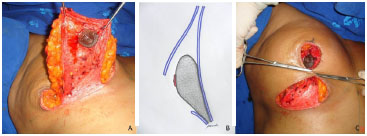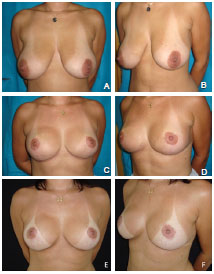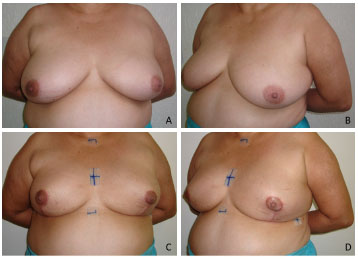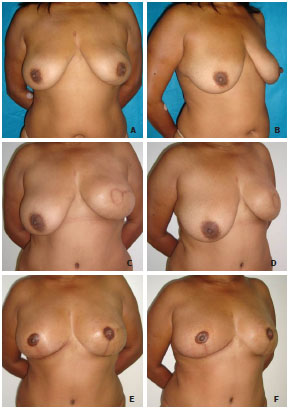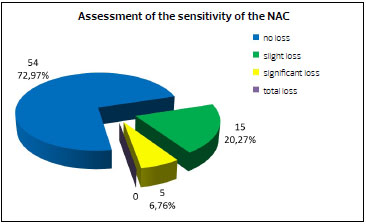ABSTRACT
INTRODUCTION: Reduction mammaplasty is one of the most common surgeries performed in the field of plastic surgery, and several techniques have been described. The inferior dermal pedicle technique, which is relatively unknown in Brazil, may have applications in both aesthetic and reconstructive surgery. The aim of the current study was to analyze the results of mammaplasty performed with this technique.
METHODS: Data were collected from a retrospective analysis of medical records. Study data also included data obtained through telephone contact with patients, photographic analysis, and patient profiles, as well as data on the purpose of the surgery, complications, satisfaction with results, and degree of sensitivity of the nipple-areolar complex (NAC).
RESULTS: During the study period, 74 patients underwent mammaplasty with the inferior pedicle technique (42 aesthetic reduction mammaplasties, 13 mammaplasties for immediate breast reconstruction following segmental resections, and 19 post-reconstruction symmetrization mammaplasties with other techniques). Complications occurred in 20 patients. Regarding the assessment of satisfaction by the patients, the outcome was rated as excellent in 62.16% of cases, good in 25.67%, and fair in 12.17%. In terms of the sensitivity of the NAC, 72.97% of patients reported no loss of sensitivity, 20.27% reported a small loss, 6.76% reported significant loss, and no patients reported a total loss of sensitivity.
CONCLUSIONS: The inferior pedicle reduction mammaplasty technique has good applicability both in aesthetic reconstructive surgeries and in immediate reconstructions (upper quadrantectomies) or symmetrizations, especially after the use of a transverse rectus abdominis myocutaneous flap. The technique offers a high degree of satisfaction with the results, a low rate of complications, a high degree of preservation of the sensitivity of the NAC, and good maintenance of the results.
Keywords: Mammaplasty; Reduction mammaplasty; Breast reconstruction; Inferior pedicle technique.


